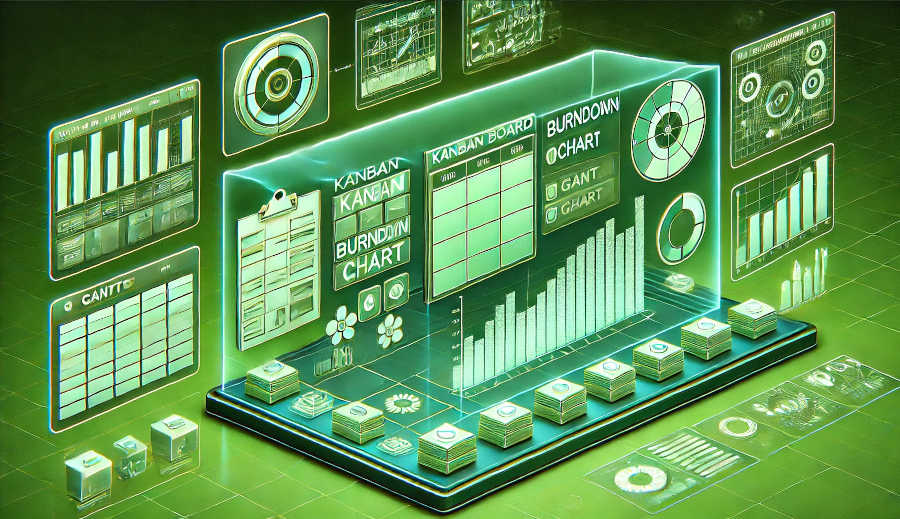The Collaborative Framework of IPD
The IPD project flowchart is fundamentally rooted in collaboration. Unlike traditional project management methods, where each stakeholder operates in silos, IPD encourages a unified approach. The flowchart visually represents this integration, mapping out how each team member's contributions are interwoven with others. This visual clarity fosters a shared understanding of project goals, timelines, and responsibilities, thereby reducing misunderstandings and conflicts. For instance, in a construction project, the flowchart would illustrate how the architect's design decisions impact the engineer's structural calculations and the contractor's construction schedule. This interconnectedness ensures that all parties are aligned, leading to more cohesive and efficient project execution.
Moreover, the IPD flowchart serves as a dynamic communication tool. In innovative projects, where new ideas and technologies are constantly being introduced, effective communication is paramount. The flowchart provides a common language that all stakeholders can refer to, ensuring that everyone is on the same page. This is particularly beneficial during the early stages of a project, where the foundation for future success is laid. By visualizing the project's trajectory, the flowchart helps identify potential bottlenecks and areas where collaboration can be enhanced. This proactive approach to communication minimizes the risk of costly delays and rework, which are common pitfalls in traditional project management.
Another significant advantage of the IPD flowchart is its emphasis on early involvement of all stakeholders. In traditional projects, stakeholders often join the process at different stages, leading to fragmented decision-making. The IPD flowchart, however, ensures that all parties are engaged from the outset. This early involvement allows for a more comprehensive understanding of the project's scope and objectives, enabling stakeholders to contribute their expertise more effectively. For example, in a software development project, having the end-users involved from the beginning ensures that the final product meets their needs and expectations. This holistic approach not only enhances the quality of the project but also fosters a sense of ownership and accountability among all team members.
Risk Mitigation and Decision-Making Acceleration
One of the most compelling advantages of the IPD project flowchart is its ability to mitigate risks. Innovative projects are inherently fraught with uncertainties, ranging from technological challenges to market fluctuations. The IPD flowchart provides a structured framework for identifying, assessing, and addressing these risks. By visualizing the entire project lifecycle, the flowchart enables stakeholders to anticipate potential issues and develop contingency plans. This proactive risk management approach is particularly valuable in industries such as aerospace and pharmaceuticals, where the stakes are high, and the margin for error is slim. The flowchart's ability to highlight critical path activities and dependencies ensures that risks are managed systematically, reducing the likelihood of project derailment.
In addition to risk mitigation, the IPD flowchart accelerates decision-making processes. In traditional project management, decisions are often delayed due to bureaucratic hurdles and lack of alignment among stakeholders. The IPD flowchart, with its emphasis on collaboration and transparency, streamlines decision-making by providing a clear roadmap of who is responsible for what and when. This clarity eliminates ambiguity and ensures that decisions are made promptly and efficiently. For example, in a manufacturing project, the flowchart would outline the sequence of tasks required to bring a new product to market, from design and prototyping to production and distribution. By having a clear visual representation of these tasks, stakeholders can make informed decisions quickly, thereby reducing time-to-market and gaining a competitive edge.
Furthermore, the IPD flowchart enhances the quality of decision-making by incorporating feedback loops. In innovative projects, where new information and insights are constantly emerging, the ability to adapt and refine decisions is crucial. The flowchart's iterative nature allows for continuous improvement, as stakeholders can revisit and revise their strategies based on real-time data and feedback. This dynamic approach to decision-making ensures that the project remains agile and responsive to changing circumstances. For instance, in a research and development project, the flowchart would facilitate the integration of new findings into the project plan, ensuring that the final product is both innovative and viable.
Enhanced Project Outcomes and Stakeholder Satisfaction
The ultimate goal of any project is to deliver outcomes that meet or exceed stakeholder expectations. The IPD project flowchart plays a pivotal role in achieving this objective by ensuring that all aspects of the project are aligned with its goals. The flowchart's comprehensive visualization of the project lifecycle enables stakeholders to monitor progress and make necessary adjustments in real-time. This continuous monitoring and adaptation ensure that the project remains on track and that any deviations are promptly addressed. For example, in a healthcare project, the flowchart would track the development of a new medical device from concept to clinical trials, ensuring that all regulatory and safety standards are met. This level of oversight enhances the likelihood of project success and stakeholder satisfaction.

Moreover, the IPD flowchart fosters a culture of accountability and transparency. By clearly delineating roles and responsibilities, the flowchart ensures that each stakeholder is aware of their contributions to the project. This clarity not only enhances individual performance but also promotes a sense of collective responsibility. In innovative projects, where the stakes are high, and the outcomes are uncertain, this culture of accountability is invaluable. It ensures that all team members are committed to the project's success and are willing to go the extra mile to achieve it. For instance, in a renewable energy project, the flowchart would outline the contributions of engineers, environmental scientists, and policymakers, ensuring that each stakeholder's expertise is leveraged to its fullest potential.
Finally, the IPD flowchart enhances stakeholder satisfaction by delivering projects that are not only on time and within budget but also of superior quality. The flowchart's emphasis on collaboration, risk mitigation, and continuous improvement ensures that the final product meets the highest standards of excellence. This is particularly important in innovative projects, where the quality of the outcome is often a key differentiator in the market. For example, in a technology project, the flowchart would ensure that the final product is not only functional but also user-friendly and aesthetically pleasing. This attention to detail enhances customer satisfaction and fosters long-term loyalty, thereby contributing to the project's overall success.
Conclusion
The IPD project flowchart is a powerful tool that offers unique advantages in the context of innovative projects. Its emphasis on collaboration, risk mitigation, and continuous improvement ensures that projects are executed efficiently and effectively. By providing a clear visual representation of the project lifecycle, the flowchart enhances communication, accelerates decision-making, and fosters a culture of accountability. These benefits translate into enhanced project outcomes and stakeholder satisfaction, making the IPD flowchart an indispensable asset for any project manager. As the complexity and scale of innovative projects continue to grow, the IPD flowchart will remain a cornerstone of successful project management, enabling teams to navigate challenges and achieve their goals with confidence and precision.
FAQ
1.How does the IPD project flowchart differ from traditional project management tools?
The IPD project flowchart differs from traditional project management tools in its emphasis on collaboration and integration. Unlike traditional tools that often operate in silos, the IPD flowchart visually represents the interdependencies and interactions among all stakeholders, fostering a unified approach to project execution. This collaborative framework enhances communication, mitigates risks, and accelerates decision-making, making it particularly suited for innovative projects.
2.Can the IPD project flowchart be used in non-innovative projects?
Yes, the IPD project flowchart can be used in non-innovative projects, although its unique advantages are most pronounced in innovative contexts. The flowchart's emphasis on collaboration, risk mitigation, and continuous improvement can benefit any project, regardless of its nature. However, in more traditional projects, the flowchart's dynamic and iterative approach may require adaptation to fit the project's specific needs and constraints.
3.What are the key elements to consider when creating an IPD project flowchart?
When creating an IPD project flowchart, it is essential to consider the following key elements: clear delineation of roles and responsibilities, visualization of task interdependencies, incorporation of feedback loops, and emphasis on early stakeholder involvement. These elements ensure that the flowchart serves as an effective communication and decision-making tool, enhancing the overall success of the project.
ARTICLE TITLE :The unique advantages of the IPD project flowchart in innovative projects ,AUTHOR :ITpmlib

















